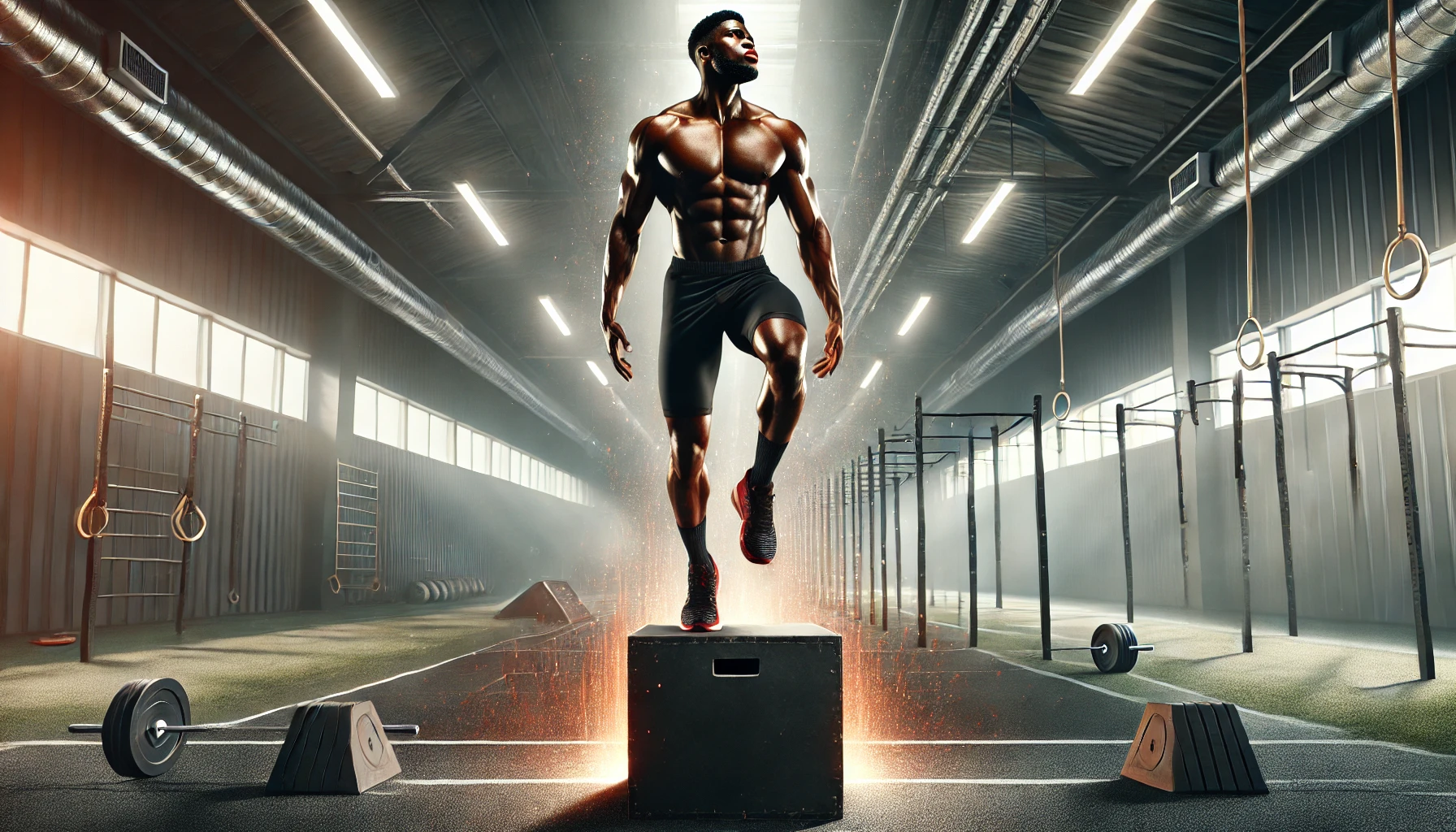Mastering the Field: The Best Agility Drills
Football is a sport that demands speed, power, and agility. Whether you are a wide receiver racing to catch a deep pass, a running back dodging defenders, or a linebacker closing in on the ball carrier, the ability to change direction quickly and maintain balance is essential for success. Sprint speed and acceleration are crucial for every position, and improving these abilities can significantly elevate your football performance.
The key to improving sprint speed and acceleration lies in training specifically designed to enhance explosive power, stride mechanics, and overall athleticism. With the right approach, athletes can increase their top-end speed and, more importantly, their ability to accelerate from a standstill or slow pace. In this article, we’ll discuss the importance of sprint speed and acceleration, the drills used to test these skills, and the best exercises for improving them to take your game to the next level.
Why Agility and Footwork Matter in Football
In football, agility and footwork are critical for success. The ability to change directions swiftly, make sharp cuts, and maintain balance under pressure allows players to avoid tackles, beat defenders, and create opportunities. Agility is not only important for offensive players, such as wide receivers, running backs, and quarterbacks, but it’s also essential for defensive players who need to react quickly to the ball carrier, change directions on a dime, and stay in front of their assignment.
Good footwork is the foundation of agility. Proper footwork helps players maintain balance, generate power, and execute movements with efficiency. Whether you’re making a quick turn, planting your foot to cut, or sprinting down the field, strong footwork ensures that every movement is effective and controlled. For example, a running back’s ability to plant his foot and cut sharply can be the difference between evading a tackler and getting taken down. Similarly, a defensive back’s ability to quickly change direction can allow them to break on the ball and make an interception.
Agility also plays a crucial role in a player’s overall athleticism. By improving footwork and quickness, players not only become more effective on the field but also reduce the risk of injury. Good agility training strengthens the muscles and joints responsible for quick movements, while also improving coordination and body awareness. In football, where split-second decisions can determine the outcome of a play, agility is an indispensable skill.
The Key Components of Agility Training
Effective agility training for football players includes several components: speed, reaction time, balance, coordination, and body control. To improve these aspects of agility, athletes need to engage in drills that target each one of these components. Whether working on lateral quickness, rapid deceleration, or explosive reacceleration, agility drills should mimic the demands of the game and challenge players to move in multiple directions at once.
One of the primary goals of agility training is to improve change of direction. Football players must often stop and start in different directions at a moment’s notice. Being able to transition from sprinting to cutting or changing directions quickly can give players a significant edge over their opponents. Agility drills that focus on quick turns, sharp cuts, and lateral movements are essential for developing this skill.
Another crucial aspect of agility training is reaction time. In football, players must be able to react quickly to an ever-changing environment. Whether it’s a quarterback dropping back to pass or a defender closing in on a ball carrier, fast reactions are key. Agility drills that incorporate reaction-based movements, such as responding to a coach’s signal or reacting to a moving object, are essential for improving this skill.
Finally, balance and coordination play vital roles in maintaining control during quick movements. Football players often need to maintain their balance while making sharp cuts or absorbing contact. Agility drills that focus on stability and foot placement help improve overall control and reduce the risk of injury.
Top Agility Drills to Improve Footwork and Quickness
There are a variety of drills that football players can incorporate into their training routine to improve footwork and quickness. These drills are designed to challenge your speed, agility, and reaction time, ultimately improving your overall performance on the field. Below are some of the most effective drills for improving agility and footwork in football.
Ladder Drills
Ladder drills are one of the most effective ways to develop quick feet and improve overall agility. They challenge players to move their feet quickly and precisely through a series of square or rectangular patterns.
- Basic ladder drill: Place both feet in each space as quickly as possible.
- Advanced ladder drill: Incorporate side steps or quick turns to increase complexity.
The benefits of ladder drills include enhanced foot speed, improved coordination, and better body control.
Cone Drills
Cone drills are a great way to improve lateral quickness and change of direction. One of the most popular cone drills is the zigzag drill, where players run from cone to cone in a zigzag pattern, practicing sharp cuts as they move.
- T-drill: Sprint to a cone, turn quickly, and run in different directions, simulating the need to change direction in football.
Cone drills help players develop lateral movement, improve balance, and increase their ability to react to the action on the field.
Pro-Agility Drill
Also known as the 5-10-5 shuttle, the pro-agility drill is one of the most commonly used agility tests in football. In this drill, players sprint 5 yards to the right, 10 yards to the left, and 5 yards back, testing their ability to change direction rapidly while maintaining control and balance.
- Focus on sharp cuts and maintaining a low center of gravity.
- Drive through the legs to power through each direction change.
This drill is often used to assess wide receivers, running backs, and defensive backs, as agility and quickness are critical for these positions.
Box Drills
The box drill is a dynamic exercise that improves both lateral and linear speed. In this drill, you set up four cones in a square, then sprint forward to the first cone, shuffle laterally to the second, shuffle back, and then perform a backward sprint to the starting point.
- Develops sharp, quick movements in various directions.
- Challenges players to stay low and use quick, short steps.
This drill helps players improve footwork and coordination while also simulating the stop-and-go nature of football.
Reaction Drills with Partner
In football, reacting quickly to your opponent’s movements is just as important as your own speed. A great way to improve reaction time is to partner up with a teammate. One player stands facing the other and calls out random directions (left, right, forward, backward) for the second player to quickly react to.
- Sprint or shuffle to the designated direction based on the partner’s call.
- Improves response time and footwork under pressure.
This drill enhances reaction time and helps players practice reacting to sudden changes in direction, which is a crucial skill during plays.
Shuttle Sprints
Shuttle sprints are simple but highly effective for improving acceleration and deceleration. In this drill, set up two markers about 10-20 yards apart. Sprint to the first marker as quickly as possible, touch the ground, and then immediately turn around and sprint back to the starting point.
- Improves quick directional changes and deceleration.
- Simulates the stop-and-go nature of football plays.
Shuttle sprints build explosive energy and are perfect for developing the ability to accelerate quickly after stopping, which is critical during football games.
Lateral Lunges and Bounds
Lateral lunges and bounds focus on developing lateral speed and explosive power. Lateral lunges build strength in the quads, glutes, and hamstrings, while lateral bounds improve lateral explosiveness, helping players make sudden cuts or jump in any direction.
- Lateral lunges: Step sideways and lower into a lunge, maintaining balance.
- Lateral bounds: Jump from side to side, landing softly on each foot.
These exercises are essential for improving the lateral movement necessary for both offensive and defensive players.
The Role of Flexibility and Mobility in Sprinting
While strength and power are essential for sprinting, flexibility and mobility play an equally important role. Flexible muscles and joints allow for a longer stride length and quicker recovery time between steps, which can improve both speed and acceleration. Tight muscles can limit stride length and prevent the muscles from fully extending, reducing sprint efficiency.
Incorporating dynamic stretching into your warm-up routine can help prepare the muscles for the explosive movements required during sprinting. Dynamic stretches such as leg swings, lunges, and hip openers target the hip flexors, hamstrings, quads, and calves, which are all crucial for sprinting. Stretching the hip flexors, in particular, improves stride length and helps you drive your legs more effectively during sprints.
Foam rolling is also an excellent tool for improving mobility. By targeting tight areas in the muscles and fascia, foam rolling helps release tension and improve the range of motion in the legs, hips, and lower back. A regular foam rolling routine will help prevent stiffness and improve flexibility, allowing you to perform sprint drills more effectively.
Recovery and Nutrition: Maximizing Gains from Sprint Training
As with any demanding physical activity, recovery is key to maximizing the benefits of sprint training. Overworking the muscles without proper rest can lead to fatigue, injury, and a decrease in performance. Proper recovery techniques, such as rest days, active recovery, and stretching, allow the muscles to repair and grow stronger.
Nutrition plays a crucial role in both performance and recovery. Football players need a balanced diet that includes carbohydrates for energy, protein for muscle repair, and healthy fats for joint health. Hydration is also essential, especially after high-intensity workouts, to replace lost fluids and prevent cramps.
The Road to Football Excellence: Consistency and Focus
Improving agility and footwork requires dedication, consistency, and a commitment to long-term progress. The best athletes are those who continually refine their skills through focused, sports-specific drills. Keep practicing and challenging yourself to improve. With regular, targeted training, you’ll become quicker, more agile, and more explosive on the field, giving you a competitive edge that can help you achieve greatness.
Incorporating these drills into your training will sharpen your agility, boost your footwork, and help you react faster to every play. Whether you’re evading defenders, making sharp cuts, or accelerating into the open field, agility and quickness will be the foundation of your success. Stay focused, train hard, and let your agility guide you to the next level in your football career!




